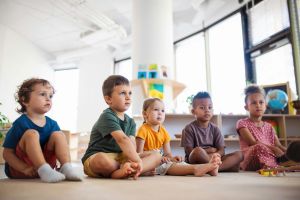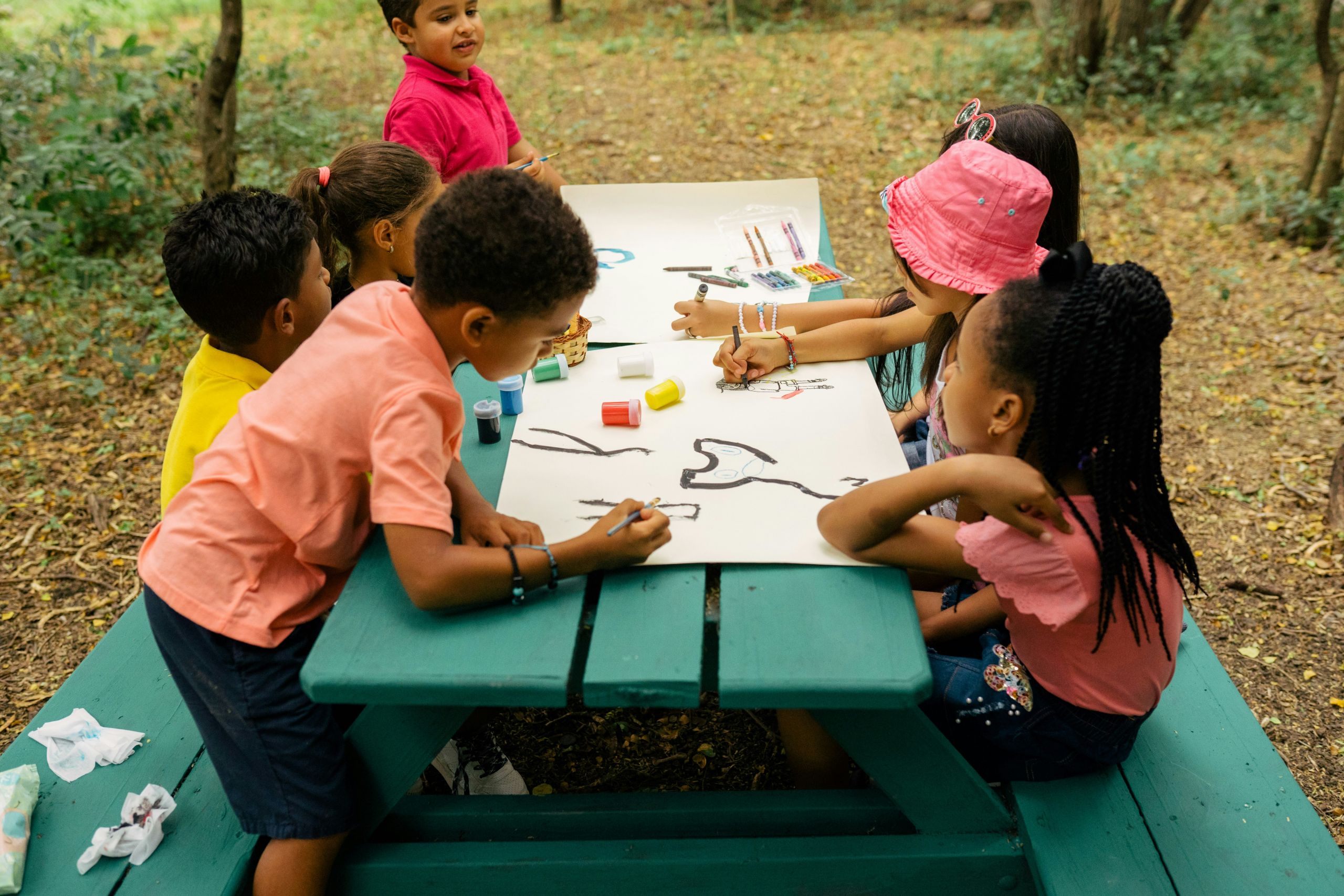In part one of this series, I covered how I build my classroom community before the students step into my classroom and how morning meetings build that foundation. We will dive deeper into keeping that classroom “family” thriving throughout the year.
Building a Classroom Family
Building a strong sense of community in your classroom is about creating a safe and supportive space where students feel like they belong. Students come into my classroom every year as strangers to both me and each other. It’s similar to welcoming new family members—you must get to know each other and build relationships. I want my students to feel like more than just students or classmates. I want to build trust, respect, and love for one another. This takes intention and time. Throughout the year, I refer to my students as “our family” and emphasize that they are an important part of our family.
“I want my students to feel like more than just students or classmates. I want to build trust, respect, and love for one another.”
Our Special Secret
I start every year with a “classroom secret.” This is a great way to get buy-in and establish the idea that we are a special family. I say, “I have a secret that you can’t tell any other kindergarten classes. This secret can’t be revealed to any other students in the school, but you can tell your family at home and any adults in the building if I ask you to share.” I make them a pinky promise, and they’re so excited to hear it. Then, I said, “Did you know Mrs. Howard chose each student who is in this class right now? I chose you because I knew you were going to be a great part of our family. I chose all of you because I knew you guys were the best kindergarten class.” However, I add, “Don’t tell the other classrooms because we don’t want to make them feel bad—they’re great classes too, but we are a special family.”
Throughout the year, when we have a guest teacher or an adult who comes into the room, I might say, “Should we tell them our secret?” The students get all excited, and I pick someone to tell them. I’ve done this every year with many siblings, and none of them have ever said something like, “My sister said they were the best class too!” The students buy into it because they know I truly believe they are a special group.
Creating a Family Through Daily Connection
As I mentioned in part one of this blog, the “question of the day” helps our classroom family learn something new about each other every day. Students get excited to discover similarities they share with me and other members of our classroom family. We also get to discuss and celebrate our differences. For example, when the question was “Have you ever been to a beach?” students who had been to the beach were able to share their favorite activities. This helps students who haven’t been to the beach build some background knowledge.
From Me to We: How Celebrating Each Other Creates Strong Classmates
Another strategy I use starts intentionally but becomes organic and instinctive. During whole-group activities, when I call on a student, there might be a few who grumble because they weren’t chosen. The first time I hear this grumbling, I use it as a teachable moment. I say, “As a family, we don’t get upset when we don’t get chosen first. We celebrate the person who gets a turn!” Then, I clap and say, “Way to go, [student’s name]!” I don’t need to repeat this explicitly again; from then on, the students take the lead. Throughout the year, they either clap or say something like, “Way to go, [student’s name],” or “I’m proud of you!” I often ask the student who is being cheered for, “How does that make you feel when your classmates clap for you?” This simple act builds compassion and respect for their classmates. It helps them learn to support each other, not tear each other down. It’s heartwarming—teachers in the next grade level often tell me they can identify my students because they continue this practice of celebrating each other’s achievements.
Open Ears, Open Hearts: Addressing Challenges in Our Classroom Family
If my whole class has an issue at lunch, specials, recess, or in class, we immediately have a “family meeting.” I prioritize holding a family meeting to address the issue, even if it means adjusting our schedule. Family meetings are very important.
When discussing the issue, like too many students playing too rough at recess, we have an open conversation. First, I might say, “We’ve been talking about playing safely at recess, and it seems like some classmates might have been playing a bit too rough, which could lead to someone getting hurt.”
We then talk about the rules and expectations we made together on the first day of school. Is this something we have on our chart? Then, we discuss why playing rough with our classroom family isn’t a good idea and what could happen if we did.
Next, we explore what activities might have led to the rough play. How can we modify the games we enjoy to make them safer? Are there different games we could choose?
This is an open conversation with me guiding the discussion, but the students are encouraged to take the lead. Students are great at reflecting on their own choices and problem-solving ways to improve the situation. We also discuss what someone can do if another classmate is playing too rough. We might even role-play different ways to handle the situation or play the game differently.
By letting students be heard and be part of the process, they will take more ownership over their actions. At the end of our “family meeting,” we do a positive reinforcement activity, like giving ourselves a pat on the back and saying, “I can make good choices.” We might also point to a friend and say, “You can make good choices,” and then all give a thumbs up and say, “We can make good choices together!” Finally, I might say something like, “I love how we solved this as a family. Even though we might still make mistakes sometimes, our classroom family will always be here to support us when we do.” We can then close with our family song.
“By letting students be heard and be part of the process, they will take more ownership over their actions.”
Reflecting and Connecting: The End-of-Day Closing Circle
I don’t always do a circle activity at the end of the day. Sometimes, we play games like silent ball, pass the potato, or Night at the Museum to wind down. Here are some other activities to end your day on a positive note.
Building Self-Esteem with Compliment Circles

When I do have a circle activity, one option is a “compliment circle.” Each student takes turns giving a compliment to the next person. The student receiving the compliment says “thank you” and then gives a compliment back. This continues around the circle, building self-esteem and encouraging students to share their feelings, experiences, and interests. This fosters empathy and understanding.
Whisper Circle: A Fun Way to Share a Message
Sometimes, we do a “whisper circle” or “telephone.” I whisper a secret like “You are important,” “I’m glad you’re here today,” or “I love my classroom family” to the first person. They whisper it to the next person, and so on until it gets back to me. Then, we all say the secret out loud. I might repeat this with another message, sometimes ending with something silly to get some giggles.
Feeling Beanbag Friends: Exploring Emotions
Another activity I use is “Feeling Beanbag Friends.” I have beanbags with different emotions written on them, such as happy, sad, angry, surprised, loved, scared, peaceful, excited, sleepy, and disappointed. I pick a beanbag, tell the students the feeling, and ask, “Family, can you show me your angry face?” (or whatever the feeling is). Then, I say, “Tell me a time or something that makes you feel this way. It can be something that happened today, a long time ago, at school, or at home.” Students then toss the beanbag to a friend. The friend can choose to share a related experience or pass it on if they don’t want to share. This allows students to share their feelings and helps them connect with others who may feel the same way.
Cooperative Games
Sometimes we end the day with a cooperative activity or game. We might work together on projects like building a cup tower, playing Jenga or Kerplunk, or creating a group story where each student adds a sentence or phrase. If you have a touch board, there are many online puzzles you can work on together, adding pieces one by one. These types of games, which require collaboration, promote teamwork and the joy of shared success.
Our Classroom Family: Growing Beyond the Walls
Here’s how creating a classroom family can carry on outside of the classroom and school:
- Positive Interactions: Students who feel part of the classroom family are more likely to display those positive traits towards others. They learn how to be supportive of each other and extend that support to classmates outside their immediate group.
- Shared Language: Referring to students as a family can create a shared language between students. They might use phrases like “We can do it together” or “Your words matter to me” when facing challenges outside of school.
- Parental Involvement: When we learn new ways to be a strong family or better friend, I ask students to share or practice these things at home. I also communicate with parents about what we’re learning through newsletters and parent communication apps. This way, everyone works together to make school a great place to be!
- Positive School Culture: A strong classroom family contributes to a positive school culture overall. I remind students that both inside and outside the classroom, we represent our family. We make good choices and are kind to make our family stronger. We discuss doing the right thing because it’s the right thing to do, while also encouraging others through positive reinforcement and modeling. If students feel supported and connected within their classroom, they’re more likely to feel that way throughout the entire school. This can lead to a more positive environment for everyone.
Why Building a Classroom Community Matters
The connections formed in a strong classroom family can sometimes last for years to come. We have a saying in my classroom: “Once a Howard kid, always a Howard kid!” This means that students always feel welcome to return and reconnect, even years later. Former students often come back in the mornings to greet me and see how I’m doing. It’s wonderful to see that they remember and feel the bond we formed in kindergarten, even when they’re now in fifth grade. My current students are also excited to see these students come in for a hug, often arriving in groups of former classmates. It’s a great opportunity to show my new students that the friendships and connections built in our classroom family can last a lifetime. This sense of belonging and support can extend beyond my classroom, as students might stay in touch with their “classroom family members” throughout their school years.
Resources
Please login or register to claim PGPs.
Alternatively, you may use the PGP Request Form if you prefer to not register an account.



